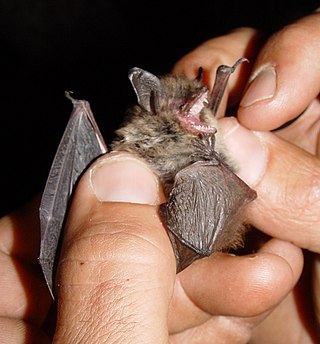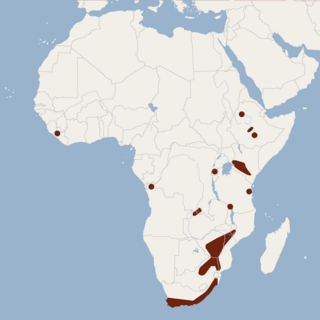
The mouse-eared bats or myotises are a diverse and widespread genus (Myotis) of bats within the family Vespertilionidae. The noun "myotis" itself is a Neo-Latin construction, from the Greek "muós and "oûs", literally translating to "mouse-eared".

The greater mouse-eared bat is a European species of bat in the family Vespertilionidae.

The Cape hairy bat, also known as little brown bat, Temminck's mouse-eared bat, Cape myotis, tricoloured mouse-eared bat, Cape hairy myotis, Temminck's hairy bat and three-coloured bat is a species of vesper bat that is found in Sub-Saharan Africa.

The long-fingered bat is a carnivorous species of vesper bat. It is native to coastal areas around the Mediterranean Sea, as well as a few patches of land in western Iran. Due to the fact that its population is in decline, it has been listed as Vulnerable on the IUCN Red List since 1988.

Orlova Chuka is a cave situated in the Danubian Plain, north-eastern Bulgaria. With a total length of 13,437 m, Orlova Chuka is the second longest cave in the country after Duhlata. The cave was discovered in 1941 and opened for tourists in 1957. Orlova Chuka is home to 14 species of bats.

Yagodinska Cave is a cave in the Rhodope Mountains, southern Bulgaria. It is included in the 100 Tourist Sites of Bulgaria and is named after the homonymous village nearby. With a total length of 10,500 m, Yagodinska is the fourth longest cave in the country after Kolkina Dupka, Duhlata and Orlova Chuka and the longest in the Rhodopes. Yagodinska Cave is home to 11 species of bats.









